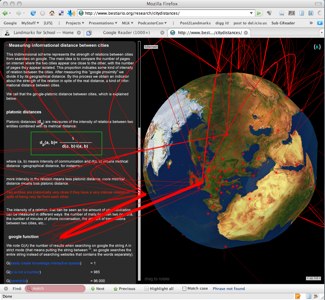 It’s sure been nice to be at home for the past week. With only a few virtual events on my calendar last week, I’ve been retiring to and rising from my own bed for the past seven days — and this trend will continue, as May is always a slow month for travel.
It’s sure been nice to be at home for the past week. With only a few virtual events on my calendar last week, I’ve been retiring to and rising from my own bed for the past seven days — and this trend will continue, as May is always a slow month for travel.
I have spent a good part of the past week recoding much of Hitchhikr, my conference aggregator. The main part of the upgrade has been inserting the features of Hitchhikr into a WordPress theme, and it has worked out very well. In the process I’ve fixed a few things, added a few things, and just spruced it up a bit.
One substancial change that I made is the ability to add your own conference tags. These are not blogging tags, which are specific to a given event, but more general tags that describe the conference (i.e., education, technology, media). Registered users (free) can also add tags to their profile, and Hitchhikr will list all of the conferences that have similar tag descriptors.
As with the old Hitchhikr, a list of blogs is generated from tag- and string-searches. The default is a Google Blog Search, but you can click into a Technorati search or a Bloglines listing. Flickr photos tagged for the event, are also displayed. I installed the FancyZoom javascript so that photos can be clicked out into enlarged versions. I love this tool.
For ed tech’ers who are interested in NECC events, NECC08 and the EduBloggerCon have just been registered. You can visit their Hitchhikr page at:
- NECC08 — http://hitchhikr.com/?id=310
- EduBloggerCon — http://hitchhikr.com/?id=370
Happy hitching!

